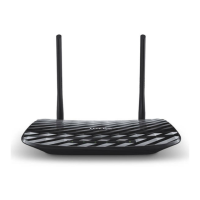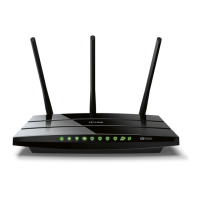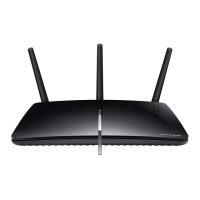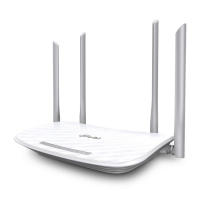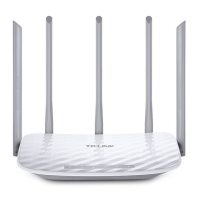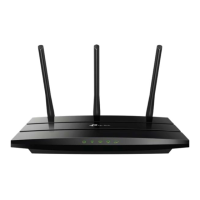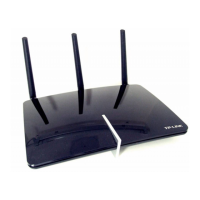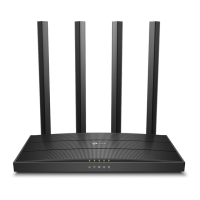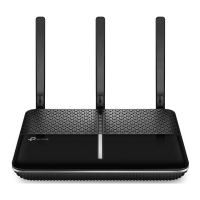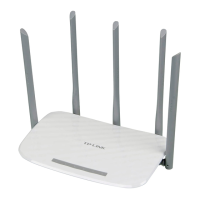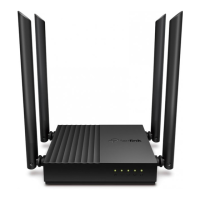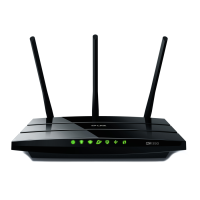Do you have a question about the TP-Link Archer AC2600 and is the answer not in the manual?
Provides a general overview of the router's capabilities and design.
Details the physical ports, buttons, and LED indicators on the router's panels.
Guidance on selecting an optimal location for the router to ensure proper performance and connectivity.
Step-by-step instructions for physically connecting the router to the modem and power.
A guided process to easily configure the router's internet connection settings.
Detailed steps for manually configuring internet connection parameters based on ISP information.
Instructions to configure the router to extend an existing network as an access point.
Configuration steps for establishing an internet connection using the IPv6 protocol.
How to create a TP-Link ID for remote management and cloud-based features.
Procedures for updating the email address and password associated with your TP-Link ID.
How to add or remove other TP-Link IDs to manage the router as users or administrators.
Using the TP-Link Tether mobile app for convenient router management on the go.
Steps to set up a separate Wi-Fi network for guests, enhancing security and privacy.
Configuring a captive portal for guest network authentication, often used for promotions.
Adjusting settings like client isolation and local network access for guest networks.
How to access files stored on USB devices connected to the router, locally or remotely.
Enabling the router to share media files (photos, music, videos) from USB storage.
Setting up internet access restrictions and time limits for family members.
Quality of Service settings to prioritize network traffic for specific applications or devices.
Built-in antivirus protection powered by Trend Micro to secure the network from threats.
Configuring the router's firewall to protect against unauthorized access and cyber attacks.
Managing which devices are allowed or blocked from accessing the network using MAC addresses.
Preventing ARP spoofing attacks by binding device IP addresses to their MAC addresses.
Setting up virtual servers to make local network services accessible from the internet.
Configuring ports to automatically open for specific applications when they initiate a connection.
Designating a device as a DMZ host to bypass port restrictions for internet access.
Enabling UPnP for seamless online gaming and other applications requiring open ports.
Setting up an OpenVPN server for secure remote access to the home network.
Configuring a PPTP VPN server for simpler remote access, though with lower security.
Modifying the router's local IP address and subnet mask for network configuration.
Combining multiple network ports to increase bandwidth and improve wired network stability.
Setting up the router to provide Internet Protocol Television (IPTV) service from your ISP.
Configuring the DHCP server to assign IP addresses and managing IP address reservations.
Using Dynamic DNS to access the router remotely via a domain name instead of an IP address.
Manually configuring routing table entries to direct network traffic to specific destinations.
Customizing wireless network name (SSID), security type, and password.
Utilizing Wi-Fi Protected Setup (WPS) for easy and secure wireless device connections.
Setting a schedule for the router's wireless network to automatically turn on or off.
Configuring the router's system time, essential for time-based features like Parental Controls.
Options to turn on/off router LEDs, including a night mode for reduced light emission.
Using diagnostic tools like Ping and Traceroute to check network connectivity and performance.
Monitoring and analyzing the router's internet upload and download speeds.
Procedures for updating the router's firmware to the latest version for improved performance and security.
Saving router configuration to a file and restoring it later, or resetting to factory defaults.
Modifying the login password for accessing the router's web management interface.
Setting up a mechanism to recover the forgotten administrator password for the router.
Controlling which devices on the LAN can manage the router using MAC address authentication.
Enabling and configuring remote access to manage the router from outside the local network.
Accessing and saving system logs for troubleshooting network issues and monitoring router activity.
Viewing network traffic statistics for LAN, WAN, and WLAN to monitor data usage.
| Frequency Band | 2.4 GHz and 5 GHz |
|---|---|
| Total Bandwidth | 2600 Mbps |
| Antennas | 4 External Antennas |
| USB Ports | 1x USB 3.0, 1x USB 2.0 |
| Wireless Standard | IEEE 802.11ac/n/g/b/a |
| WiFi Speeds | 800 Mbps on 2.4 GHz, 1733 Mbps on 5 GHz |
| Ethernet Ports | 1 Gigabit WAN Port, 4 Gigabit LAN Ports |
| Processor | Dual-core CPU |
| Security | WPA-PSK/WPA2-PSK |
| Working Modes | Router, Access Point |
| Memory | 128 MB Flash |
